Meal Moth Larvae in Dog Food: A Comprehensive Analysis
Introduction
The presence of meal moth larvae in dog food is a significant concern for pet owners and manufacturers alike. These insects, known for their ability to infest stored food products, can pose health risks to both humans and pets. This article aims to provide a comprehensive analysis of the issue, exploring the causes, effects, and potential solutions to the problem of meal moth larvae in dog food.
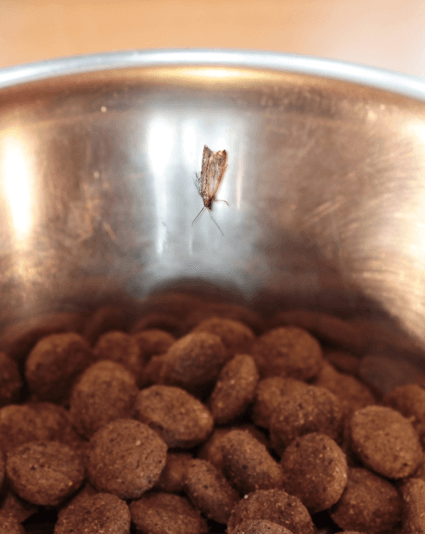
Causes of Meal Moth Infestation
1. Poor Storage Conditions
One of the primary causes of meal moth infestation in dog food is poor storage conditions. Meal moths thrive in environments with high humidity and temperatures ranging from 70 to 90 degrees Fahrenheit. When dog food is stored in warm, damp conditions, it becomes an ideal breeding ground for these pests.
2. Contaminated Raw Materials
Another cause of meal moth infestation is the use of contaminated raw materials in the production of dog food. Meal moths can infest grains, seeds, and other plant-based ingredients used in dog food manufacturing. If these ingredients are not properly inspected and treated, the larvae can survive the production process and contaminate the final product.
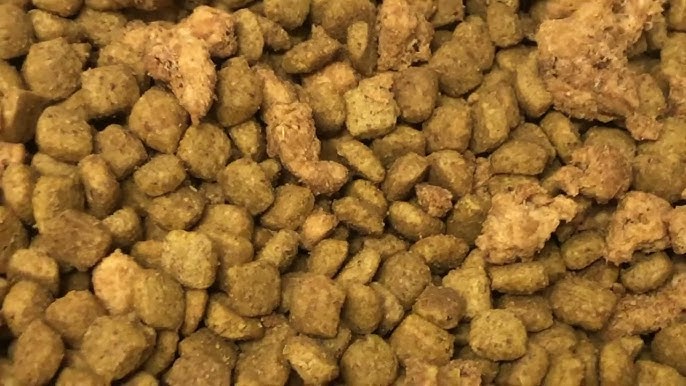
3. Inadequate Packaging
Inadequate packaging can also contribute to meal moth infestation. If dog food packaging is not airtight or made from materials that are easily penetrated by insects, meal moths can gain access to the food and lay their eggs inside.
Effects of Meal Moth Infestation
1. Health Risks
The presence of meal moth larvae in dog food can pose health risks to both pets and humans. The larvae can cause allergic reactions in some individuals, while the ingestion of contaminated food can lead to gastrointestinal issues in pets.
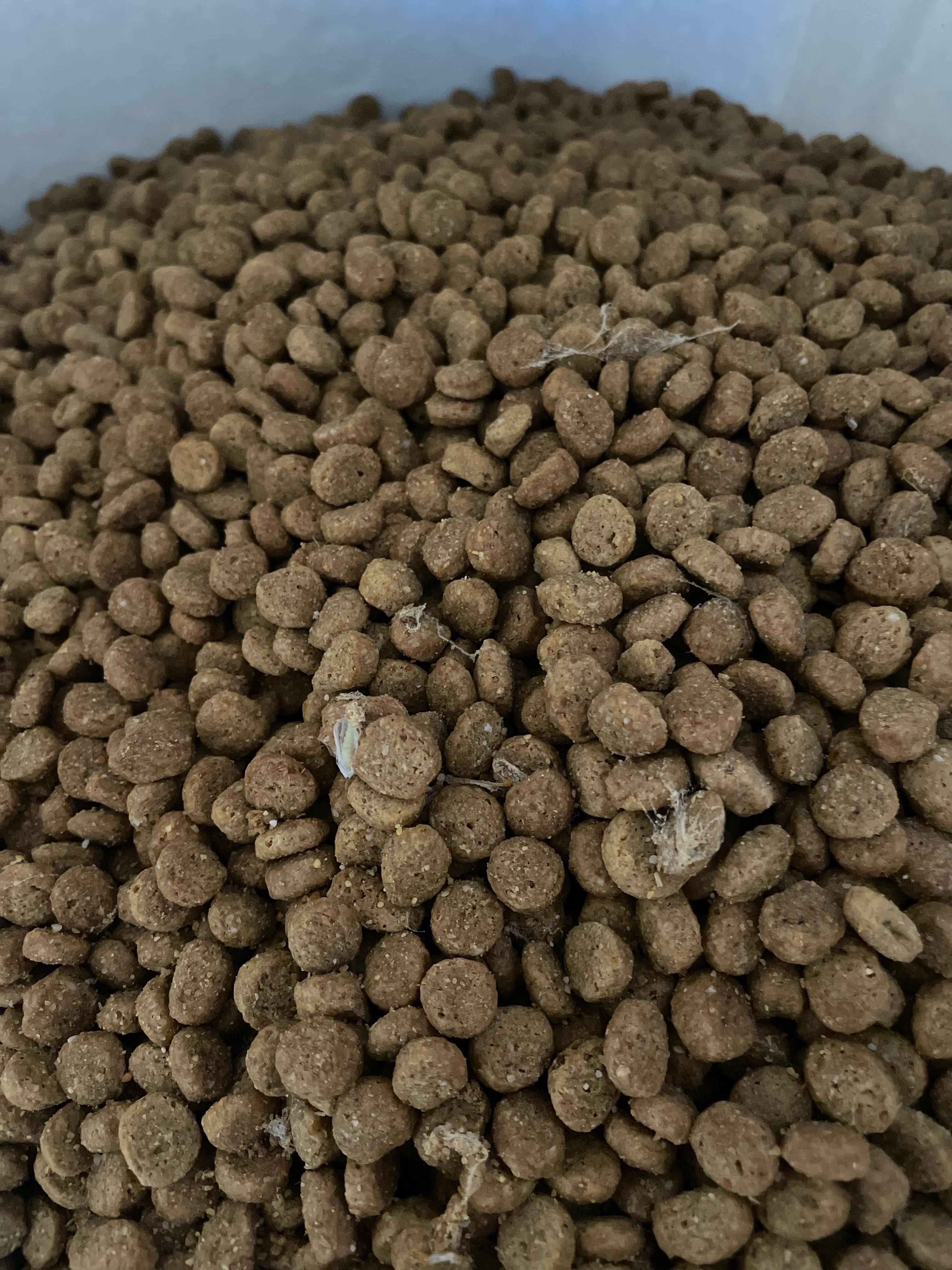
2. Economic Losses
Meal moth infestation can result in significant economic losses for pet food manufacturers. The cost of recalling and replacing contaminated products, as well as the potential loss of customers, can be substantial.
3. Reputation Damage
The discovery of meal moth larvae in dog food can damage the reputation of pet food brands. Consumers may lose trust in the brand and its products, leading to a decrease in sales and market share.
Prevention and Control Measures
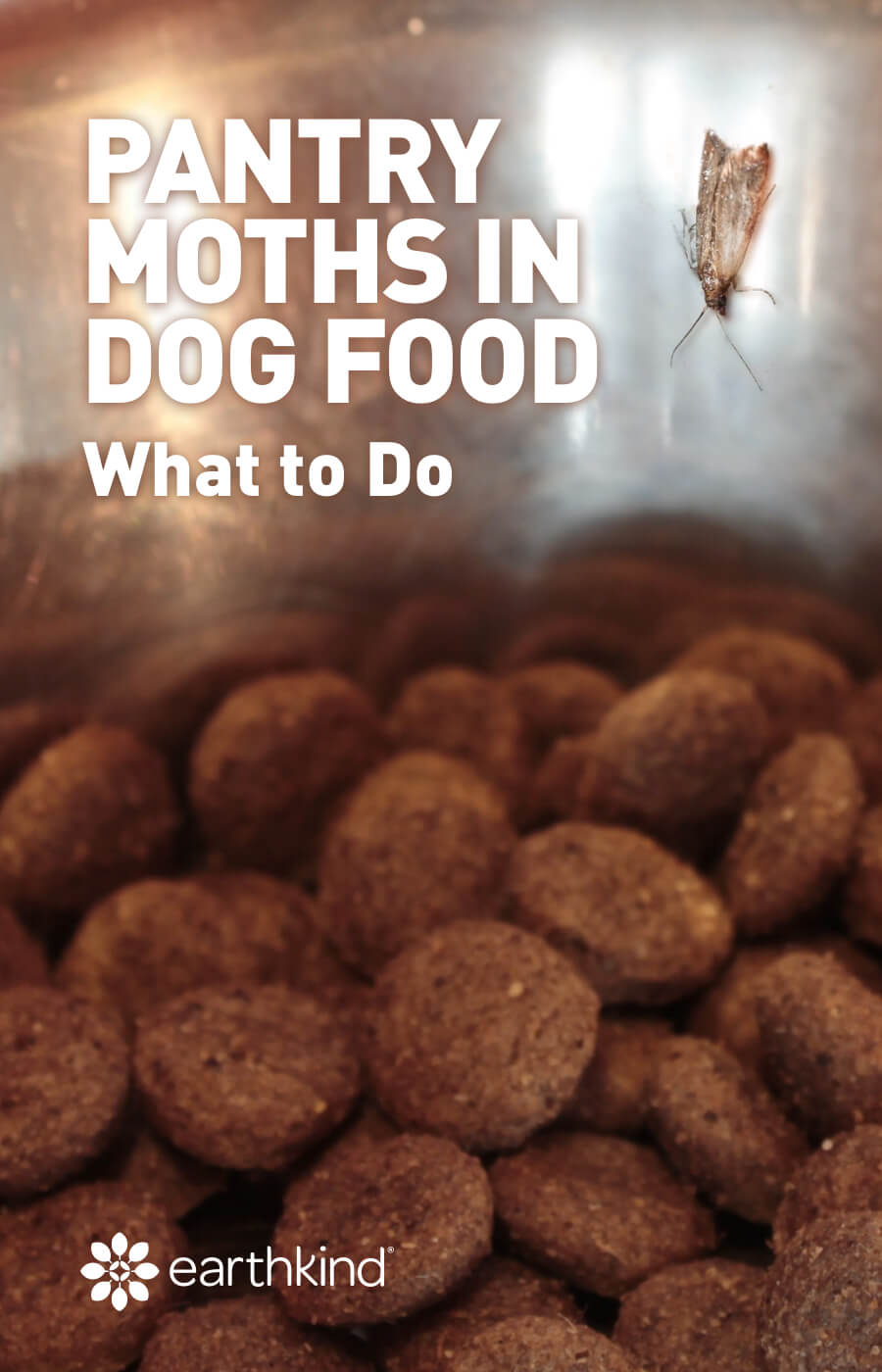
1. Proper Storage
To prevent meal moth infestation, it is crucial to store dog food in a cool, dry place. Airtight containers or plastic bags can help keep the food safe from insects and other pests.
2. Inspection and Treatment of Raw Materials
Pet food manufacturers should inspect and treat raw materials to ensure that they are free from meal moth infestation. This can involve using heat, cold, or chemicals to eliminate the larvae and eggs.
3. Improved Packaging
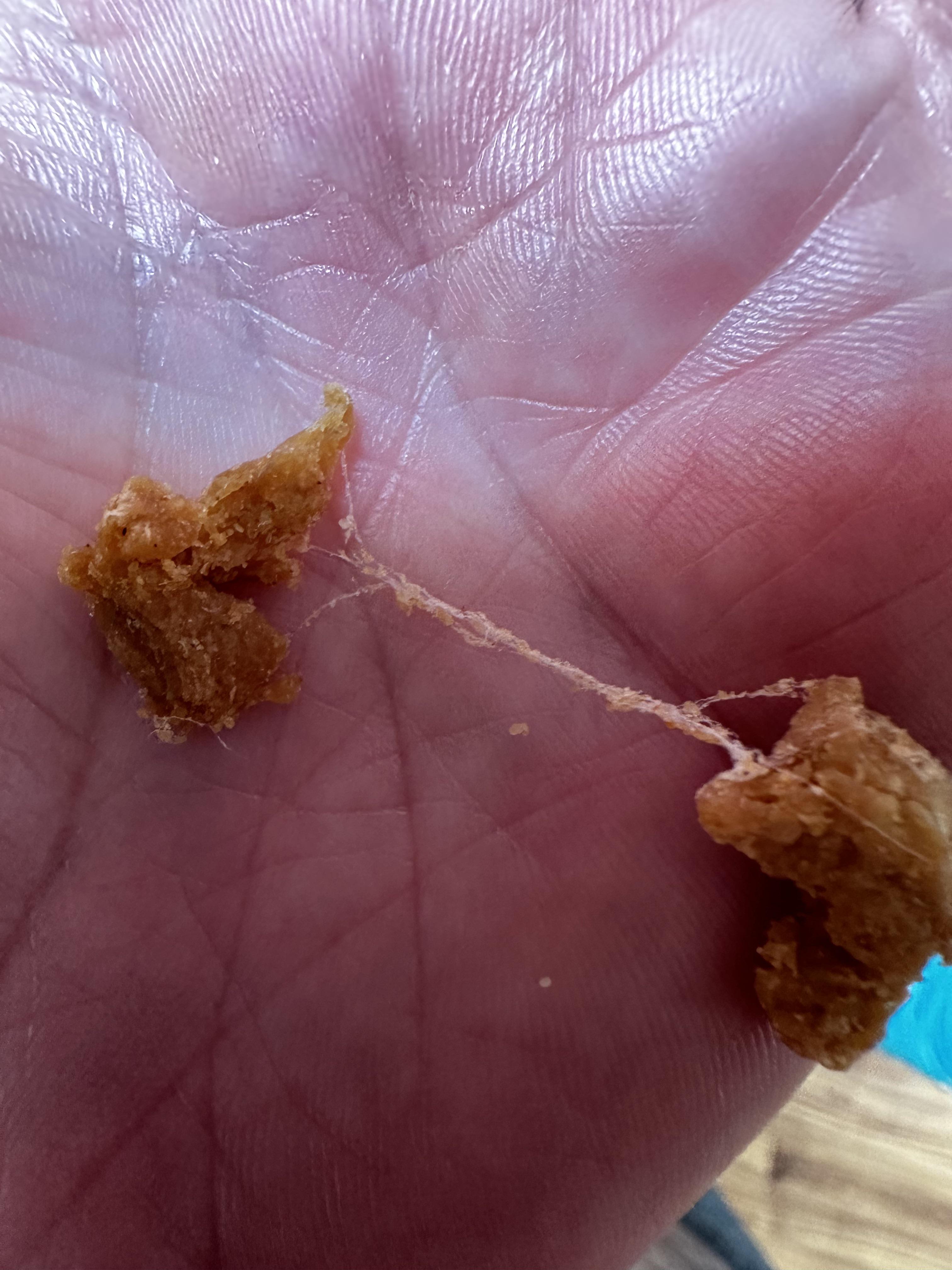
Using airtight, insect-resistant packaging materials can help prevent meal moth infestation. Additionally, incorporating pest control agents into the packaging can provide an extra layer of protection.
Case Studies
1. Petco Recall
In 2019, Petco recalled several brands of dog food due to the presence of meal moth larvae. The recall affected thousands of consumers and resulted in significant financial losses for the company.
2. Blue Buffalo Class Action Lawsuit
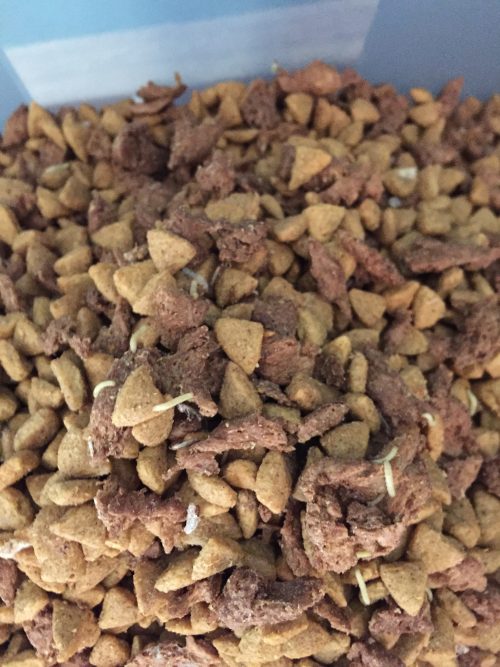
Blue Buffalo faced a class action lawsuit in 2018 after consumers discovered meal moth larvae in their dog food. The lawsuit highlighted the importance of addressing the issue of meal moth infestation in the pet food industry.
Conclusion
The presence of meal moth larvae in dog food is a significant concern that requires immediate attention from pet food manufacturers and regulators. By implementing proper storage, inspection, and packaging practices, the pet food industry can reduce the risk of meal moth infestation and protect the health and well-being of pets and their owners.
Recommendations
To further address the issue of meal moth larvae in dog food, the following recommendations are proposed:
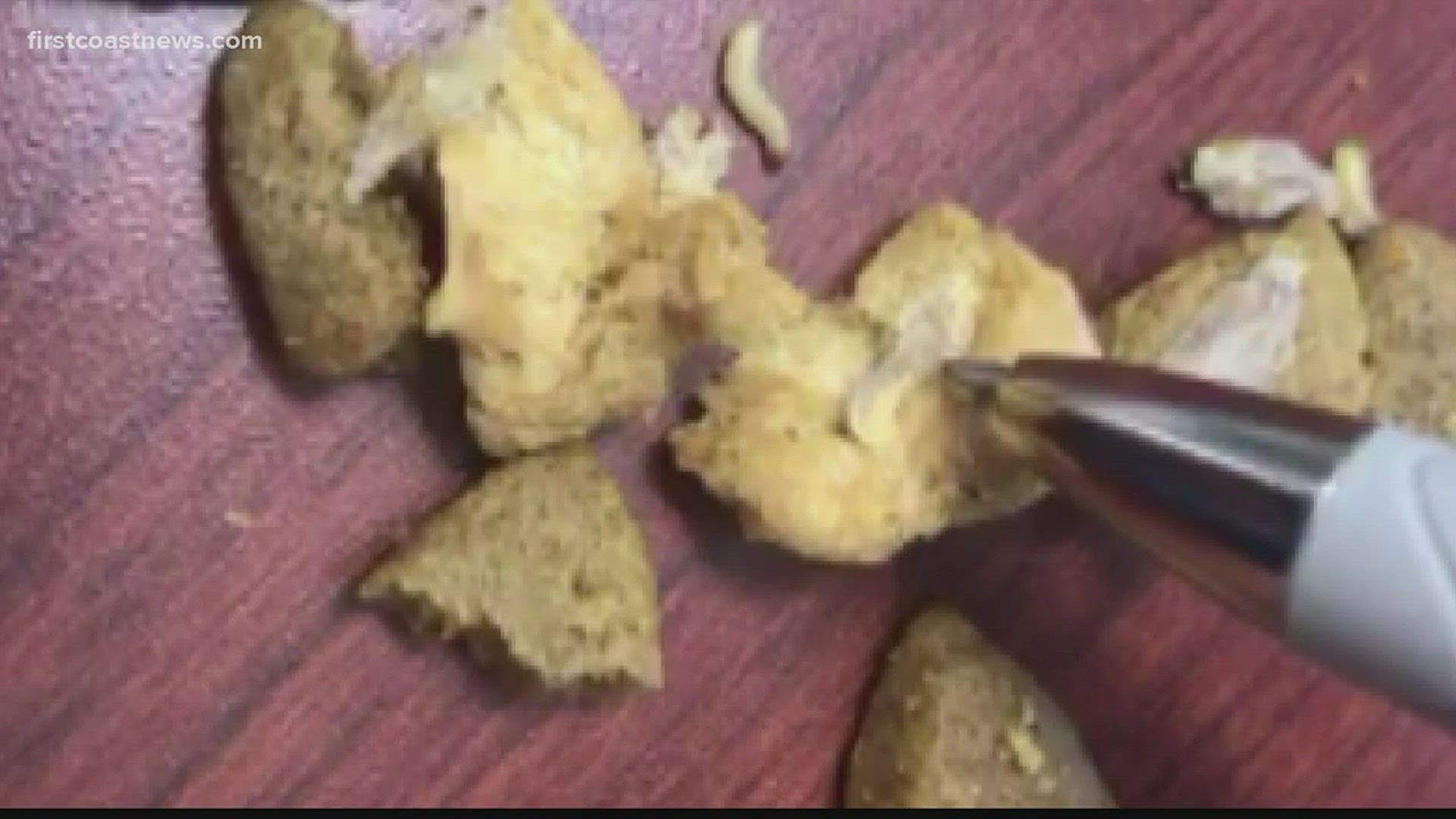
1. Implement strict quality control measures during the production process to ensure that raw materials are free from infestation.
2. Develop and enforce industry standards for the storage and handling of dog food to minimize the risk of meal moth infestation.
3. Increase public awareness about the health risks associated with meal moth larvae in dog food and encourage consumers to report any incidents of infestation.
Future Research
Future research should focus on the following areas:
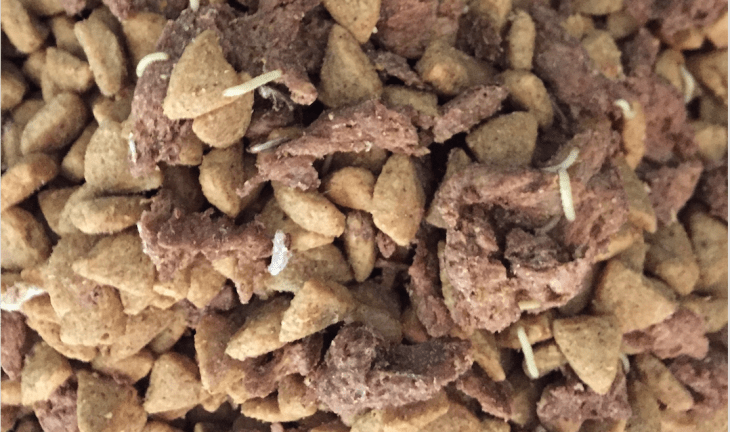
1. Investigating the effectiveness of different pest control methods in preventing meal moth infestation in dog food.
2. Identifying the genetic factors that make certain dog food brands more susceptible to meal moth infestation.
3. Developing new packaging materials that are both airtight and insect-resistant to protect dog food from infestation.





